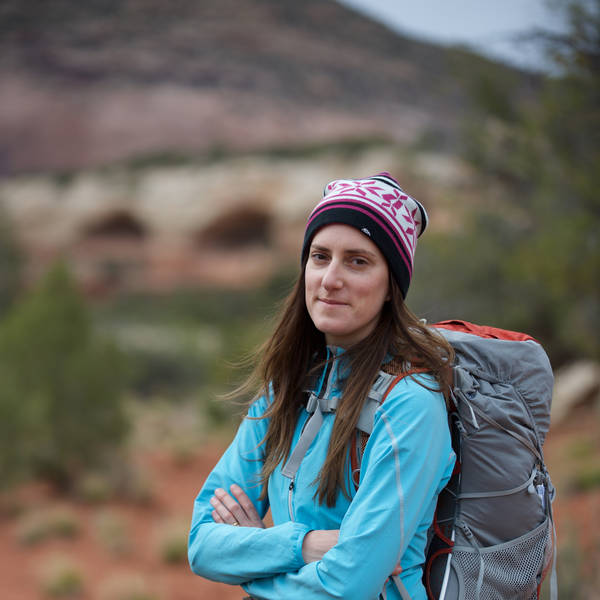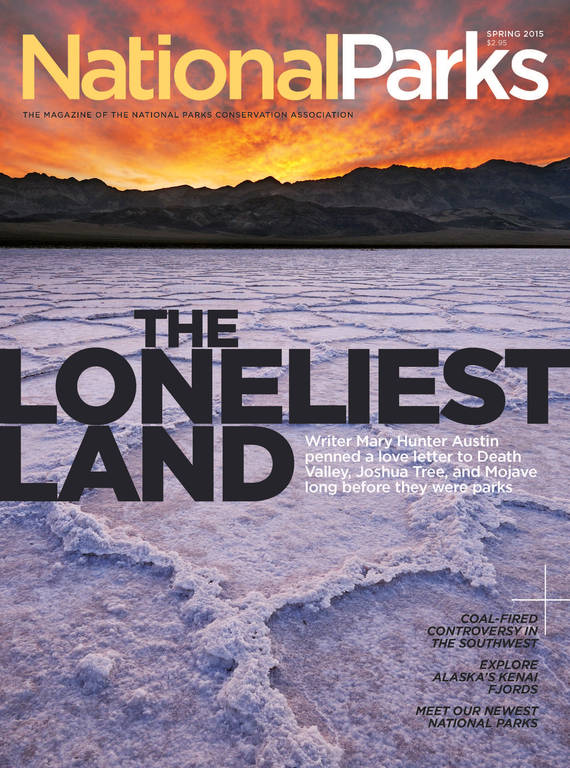Spring 2015
Bearing Witness
Bearcams in Katmai National Park and Preserve are capturing impressive scenes from the wild—and changing the nature of park visitation.
In the fast riffles below Brooks Falls in Katmai National Park and Preserve, a large male brown bear named Otis waits patiently. His muscular bulk is very still, and his coat gleams in the summer sunlight. Suddenly, he lunges into the water with a splash and emerges with a huge candy-red salmon flapping wildly in the air. With one swipe of his powerful jaws, he breaks it in half, pulls off the skin, and starts chewing.
It’s a magnificent, quintessentially Alaskan scene, and at that moment, as many as 19,000 people from around the country and the world are watching. But almost none of them are actually there. The vast majority follow via a camera that records the scene and streams the video live over the Internet.
WHEN TO WATCH
Since they were established in 2012, Katmai’s five live-streaming webcams have exploded in popularity, attracting observers from every state and almost every country. Last year, viewers spent nearly 6 million hours watching grizzly bears and other wildlife, and forums racked up as many as 50,000 comments in a week. The technology can be challenging to manage, but it has allowed the park to reach many more people than can physically visit, and viewers’ observations have contributed to rangers’ understanding of the bears.
It all started in 2008, when the National Park Service partnered with a local museum, National Geographic, and RealNetworks to establish a small static webcam capable of hosting about 25 simultaneous users. The technology repeatedly crashed, funding dried up in the recession, and by 2009, the Park Service shelved the idea, believing it was ahead of its time. But in 2012, Roy Wood, chief of interpretation for Katmai, received a call from Explore, a nonprofit organization that funds films, photography, and webcams that document charitable work. Explore already hosted several successful live-stream webcam feeds that captured the daily activities of creatures as diverse as kittens, hummingbirds, pandas, and polar bears.
“Filming Katmai has always been a dream of mine,” says Charles Annenberg Weingarten, founder of Explore. “My hope is simply to allow people to get up close and personal with nature and fall in love with the world again.”
The first day Explore’s new webcams went live in Katmai in 2012, so many viewers logged on that even that technology crashed. Explore immediately bought more server space. Now, five webcams record scenes throughout the park, which encompasses about 4 million acres of volcanoes, rolling tundra, lakes, and salmon-clogged streams. On camera, viewers have watched young male bears play-fighting, sows sauntering about the mountains with their cubs, and spectacular fishing displays. Occasionally a wolf, moose, or lynx wanders in front of the frame or a bald eagle flies by. One underwater camera focuses on salmon below the surface—and periodically captures the swipe of a big furry paw.
A team of about 20 volunteers and a crew in Los Angeles—part of a career-development program for at-risk teenagers called New Earth—operate the cameras, which can pan the scene and zoom in and out. The rangers also use mobile video cameras to film particularly interesting events (such as a cub stuck in a tree), and they’ll even step in front of the lens to answer questions submitted via Twitter, Facebook, or Skype.
Rangers have been astounded by the bears’ viral following. In June and July, peak months for the salmon run, more than 18,000 viewers might be watching from as far as Iran and the Vatican. “I always wonder if the Pope is on there after hours, watching the bearcams, kicking back with a glass of wine,” says Wood.
At first, staffers worried that the webcams’ popularity would send park visitation skyrocketing, but that hasn’t happened, largely because getting to Anchorage, then taking a seaplane or boat trip to the park, is prohibitively expensive for many would-be adventurers. Interest in learning about the park, however, has mushroomed.
Juergen Lorenzen, a German telephone support technician who lives near Stuttgart, says he watches the bears at work every day and talks to his co-workers about them. “I am totally hooked,” he says.
Loyal bearcam viewers have sent stacks of letters to the Park Service exalting the bears. Teachers have used the cams to inspire autistic children, and chemotherapy patients have brought the feed into treatment rooms to calm their nerves. One former gang member from Los Angeles, who trained to be a bearcam operator with New Earth, said that watching the bears changed his life.
“Where I think the cams really excel is giving people this surrogate experience that they can’t afford or logistically make happen,” says Roy Wood. “It’s building that constituency and that stewardship that you’re not going to get if you just say, ‘Sorry, you can’t afford $5,000 for a trip here.’” Wood also says that watching the bears before visiting often deepens the connection park travelers feel to the bears and the landscape when they arrive. They get to know the bears’ personalities, histories, family relationships, and quirks before they encounter them in person.

National Parks
You can read this and other stories about history, nature, culture, art, conservation, travel, science and more in National Parks magazine. Your tax-deductible membership donation of $25 or more entitles…
See more ›On occasion, bearcam viewers have conveyed important information about the bears to the park. Last summer, after a sow abandoned her cub in a tree while being courted by a large male bear, rangers prepared viewers for the tiny, helpless cub to die. Tina Crowe, a bearcam viewer from California who was visiting the park for the first time, felt devastated. Later, however, at a remote stream, she found and photographed the cub with another sow, which eventually started nursing it. Her photographs became one of the few documented instances in which a grizzly bear adopted an unrelated cub.
On the other hand, the popularity of the webcams has posed new challenges for park employees. Last summer, for example, a bear called Divot wandered in front of the camera with a wolf snare around her neck. (Wolf trapping is legal outside park boundaries.) The snare was slowly decapitating her, and viewers were outraged. Normally the Park Service would have quietly tried to save the bear and released a report later, but instead, staffers launched a dramatic, public rescue mission and documented it for anxious viewers. (The rescue video is now posted on YouTube.) The happy result was a mountain of grateful letters—more than the regional director received in his entire career. The situation demanded extra effort, Wood says, but it also showed the deep attachment viewers have to the bears and demonstrates how the webcams can inspire future national parks supporters.
“Growing up, I was never exposed to anything like this,” says Anna-Marie Gantt, a high school biology teacher from Tucson who uses the webcams in her lessons and visited Katmai last year. “Nowadays, students can bring the webcams up on their phones. They can observe a national park and a wilderness area that is protected. They can know that it’s out there and it’s waiting for them.”
About the author
-
 Kate Siber
Kate SiberKate Siber, a freelance writer and correspondent for Outside magazine, is based in Durango, Colorado. Her writing has appeared in National Geographic Traveler and The New York Times. She is also the author of “National Parks of the U.S.A.,” a best-selling children’s book.



